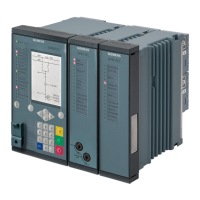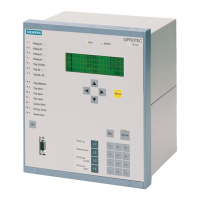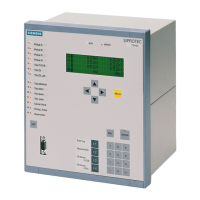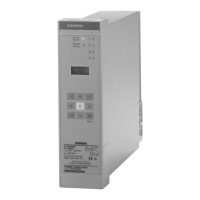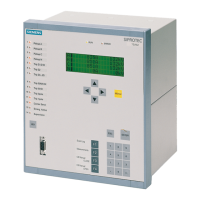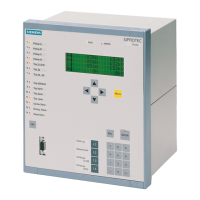Functions
2.49 Auxiliary Functions
SIPROTEC, 7UM62, Manual
C53000-G1176-C149-7, Release date 03.2010
330
Classification of Messages
The indications are categorized as follows:
• Operational indications; indications generated while the device is operating: Information regarding the status
of device functions, measured data, power system data, control command logs etc.
• Fault indications: indications from the last 8 network faults that were processed by the device.
• Indications on "Statistics": they include a counter for the trip commands initiated by the device, possibly
reclose commands as well as values of interrupted currents and accumulated fault currents.
A complete list of all indications and output functions that can be generated by the device, with the associated
information number (No.), can be found in the Appendix. The list also shows where each indication can be sent
to. If functions are absent in a not fully equipped version of the device, or are configured as Disabled, then
the associated indications cannot appear.
Operational Annunciations (Buffer: Event Log)
Operational annunciations are information generated by the device in operation, and concerning the operation.
Up to 200 operational annunciations are stored chronologically in the device. Newly generated annunciations
are added to those already there. When the maximum capacity of the memory is exhausted, the oldest annun-
ciation is lost.
Fault Annunciations (Buffer: Trip Log)
After a fault on the system, for example, important information about the progression of the fault can be re-
trieved, such as the pickup or initiation of a trip signal. The start of the fault is time stamped with the absolute
time of the internal system clock. The course of the disturbance is output with a relative time referred to the
pickup instant, so that the duration until tripping and up to reset of the trip command can be ascertained. The
resolution of the time information is 1 ms.
Spontaneous Messages From the Device Front
After a fault the most important data of the fault appear on the display automatically after a general device
pickup without any further operating actions.
When a graphical display is used, spontaneous messages can also be set in parameters (see also Section 2.2).
Retrievable Annunciations
The annunciations of the last eight network faults can be retrieved and output. Where a generator fault causes
several protective functions to pick up, the fault is considered to include all that occurred between pickup of the
first protective function and dropout of the last protective function.
In total 600 annuncations can be recorded. Oldest data are erased for newest data when the buffer is full.
General Interrogation
The present condition of a SIPROTEC 4 device can be examined with DIGSI by viewing the contents of the
General Interrogation. It shows all annunciations that are subject to general interrogation with their current
value.
Spontaneous Messages
The spontaneous annunciations displayed using DIGSI reflect the present status of incoming information. Each
new incoming annunciation appears immediately, i.e. the user does not have to wait for an update or initiate
one.
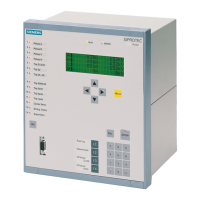
